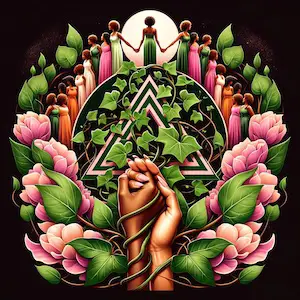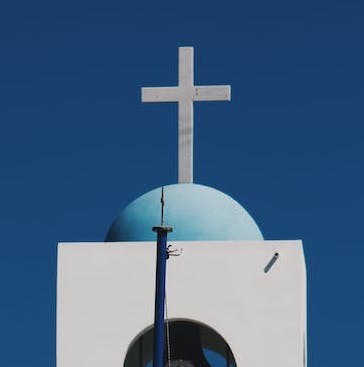Venture into the ethereal landscape of Iceland, where the rugged terrain whispers ancient tales and the aurora borealis dances in the night sky. Here, amidst the raw beauty of nature, thrives a tradition as mystical and profound as the land itself – the tradition of Icelandic Galdrar chants. These are not mere songs but incantations, rich with history and spirituality, resonating through the ages.
In this exploration, we’ll delve into the heart of Icelandic culture, uncovering the secrets of Galdrar chants, their purposes, and their enduring significance in modern society. From the healing Lækningagaldrar to the protective Varnargaldrar, and the insightful Spágaldar, each chant weaves a story of heritage, unity, and the profound connection between the Icelandic people and the forces of nature. Join us on this journey through the mists of time, as we discover the enchanting world of Icelandic Galdrar chants.

Table of Contents
Introduction & Historical Context
Welcome to the enchanting realm of Icelandic Galdrar chants, a mystical tradition woven into the very fabric of Iceland’s cultural tapestry. These chants, more than just melodies, are a bridge connecting the present to a time when Vikings roamed the seas and magic was a part of everyday life.
Origin and Evolution of Galdrar Chants
The saga of Galdrar begins in the Viking Age, an era marked by exploration, conquest, and a profound connection with the supernatural. The Old Norse word ‘galdr,’ from which the term Galdrar originates, means ‘chant’ or ‘spell.’ These incantations were deeply rooted in Norse mythology and paganism, primarily intended for healing, protection, and altering the course of fate.
As Iceland converted to Christianity in the year 1000, Galdrar chants faced the threat of oblivion. Yet, instead of vanishing, they adapted, absorbing new influences while preserving their mystical essence. Throughout the centuries, these chants evolved, echoing the changing landscapes of Icelandic spirituality and culture.
The practice of Galdrar was often shrouded in secrecy, primarily due to the medieval church’s disapproval. However, the resilience of this tradition ensured its survival, passed down through generations in hushed tones and concealed texts.
Today, Galdrar chants are not just relics of the past but living fragments of history, embodying the resilience and spiritual depth of the Icelandic people. As we delve deeper into the mystical and cultural significance of these chants, we uncover a world where the ancient and the modern, the magical and the mundane, harmoniously coexist.
Get ready to embark on a journey through time, where each chant tells a story of faith, power, and the unbreakable bond between a people and their heritage. Let the haunting melodies of Galdrar guide you through the misty landscapes of Iceland, where every mountain, every fjord, and every stone has a tale to whisper, if only one knows how to listen.
The Mystical Aspects of Galdrar
Step into the mystical realm of the Icelandic Galdrar, where each chant is not merely a sequence of sounds but a key unlocking the mysteries of the universe. Galdrar chants are much more than traditional folklore; they are the embodiment of ancient wisdom and the mystical forces of nature, meticulously preserved through the ages.
Understanding the Magic Behind the Chants
At the heart of Galdrar’s mystique is the belief in the power of sound and word. According to ancient Norse traditions, the universe itself was created from the sound, making every word, every vibration, an act of creation. Galdrar practitioners, known as galdrmeistarar, were revered for their ability to shape reality through their incantations. They believed that through specific tones and rhythmic patterns, one could harmonize with the frequencies of the universe, influencing events and summoning supernatural entities.
Types of Chants and their Purposes
Galdrar chants are as diverse as the intentions behind them. Some were crafted for healing, calling upon the benevolent spirits of nature to restore balance and health. Others were designed for protection, creating invisible shields against malevolent forces. There were also chants for divination, to glimpse into the future or seek guidance from the ancestors.
- Healing Chants (Lækningagaldrar): These chants were often performed in a ritualistic manner, sometimes accompanied by herbs and runes. They were believed to tap into the healing energies of the earth, invoking restoration and wellbeing.
- Protective Chants (Varnargaldrar): Crafted to ward off evil and misfortune, these chants were a spiritual armor, safeguarding individuals and communities from unseen threats.
- Divinatory Chants (Spágaldar): Used to uncover hidden truths and future events, these chants were a bridge between the physical world and the realm of spirits. They required profound concentration and a deep connection with the spiritual forces.
Each type of chant held its unique rhythm, tone, and set of words or runes, believed to resonate with specific energies in the universe. The mastery of Galdrar was not merely in the recitation but in the understanding and harmonization with these cosmic vibrations.
As we explore these mystical aspects of Galdrar, we begin to understand the reverence this tradition holds in Icelandic culture. It’s not just about the words or the melodies; it’s about the connection with the ancient, the spiritual, and the natural world. In the whispers of the Galdrar chants, we find the echoes of a time when man and magic spoke the same language, a time that Iceland keeps alive in its cherished traditions and tales.
Healing Chants (Lækningagaldrar)
In the heart of Icelandic folklore, Lækningagaldrar, or healing chants, are considered one of the most benevolent and nurturing aspects of the Galdrar tradition. These chants, rich in history and spirituality, are not just songs but a form of ancient medicine, intertwining the power of sound, intention, and the natural world.
The Essence of Lækningagaldrar
Lækningagaldrar are more than mere recitations; they are rituals, a sacred dialogue between the healer, the ailing, and the forces of nature. Rooted in the belief that every element of the universe is interconnected, these chants are crafted to restore harmony, not just in the physical body but in the spirit and the cosmic fabric surrounding an individual.
The Ritual of Healing
The practice of Lækningagaldrar is a holistic approach to healing. It often involves the use of natural elements like herbs, stones, and water, believed to possess their own vibrational energy. The healer, or the practitioner of the Galdrar, enters a meditative state, channeling their intention and energy through the chant. The words of the chant are carefully chosen, each syllable resonating with the frequencies of health and restoration.
The Role of Runes
In some traditions, runes, the ancient Norse alphabet, play a crucial role in Lækningagaldrar. Each rune is not just a letter but a symbol of cosmic power. Healers often incorporate specific runes into their chants or inscribe them on objects or bodies as part of the healing ritual. The runes, combined with the chant, create a powerful synergy, believed to activate and direct the healing energies of the universe.
Community and Healing
Lækningagaldrar are not just personal; they are communal. In the old days, healing chants were often performed in gatherings, where the collective intention and energy of the community amplified the healing process. This tradition underscores the Icelandic belief in the power of unity and the shared responsibility for each other’s wellbeing.
Modern Relevance
Even today, the essence of Lækningagaldrar resonates with many, transcending the boundaries of time and culture. In a world where the harmony between nature and humanity often seems fractured, these healing chants remind us of the profound connection we share with the world around us. They encourage us to look beyond the physical, to heal not just the body but the spirit and the planet we inhabit.
In the gentle hum of Lækningagaldrar, one finds not just a melody but a message – a call to return to balance, to respect and harness the healing powers that nature generously offers. These chants are a testament to the wisdom of the ancients, a wisdom that teaches us that true healing is holistic, inclusive, and deeply rooted in the harmony of all existence.
- Vörður Heilsu (Guardian of Health)
- Lyrics: “Vörður heilsu, hlydda mín mál, færa frið, heilindi hér.”
- Meaning: This chant calls upon the guardian spirits of health, pleading for peace and wellness to be brought into the life of the ailing. It’s a plea for balance and restoration, invoking the protective energies of nature.
- Ljós Lífandi (Light of Life)
- Lyrics: “Ljós lífandi, leið þú mig, í gegnum myrkur, til heilsu veg.”
- Meaning: This chant is a request for guidance and illumination in times of illness or despair. It appeals to the ‘Light of Life’ to lead the way through darkness, paving a path to health and vitality.
- Bjargráður Bæta (Remedy of Relief)
- Lyrics: “Bjargráður bæta, blómstra kraft, lækna lýða, lifandi aft.”
- Meaning: This chant is a call for healing energies to blossom and flourish. It seeks the power of remedies and relief, praying for the restoration of health and the rejuvenation of life.
- Hugsaðu Heild (Think of Wholeness)
- Lyrics: “Hugsaðu heild, heilbrigði kall, samræmi sál, og líkama all.”
- Meaning: This chant emphasizes the holistic nature of healing. It is a reminder to think of wholeness, calling for harmony between the soul and the body, advocating for a comprehensive approach to health.
- Gróðrar Græðir (Healer of Growth)
- Lyrics: “Gróðrar græðir, gef þú mér, kraftur náttúrunnar, heilsumér.”
- Meaning: This chant seeks the healing power of nature’s growth. It’s a plea to the healer of growth to grant the strength and vitality inherent in nature, fostering healing and well-being.
These chants are symbolic representations and should be viewed as inspired creations, not as direct translations or authentic Icelandic Galdrar. The true power of Lækningagaldrar lies in their cultural context, the intention behind the words, and the belief system of the people who practice them. The beauty of these chants is their ability to connect individuals to a deeper sense of health, community, and the world around them, transcending linguistic and cultural barriers.
Protective Chants (Varnargaldrar)
Venture into the realm of Varnargaldrar, the Protective Chants, an integral component of the Icelandic Galdrar tradition. These chants are not mere words but are powerful shields woven from sound, intention, and ancient wisdom, guarding against misfortune and malevolent forces.
The Essence of Varnargaldrar
Varnargaldrar are rooted in the belief that words carry the weight of intention, and when crafted and recited with profound focus, they can shape the fabric of reality. These chants serve as spiritual fortifications, offering protection to individuals, families, and communities. In a world where unseen forces and unpredictable events were common, these chants provided a sense of security and peace.
Crafting the Shield of Sound
The creation and recitation of Varnargaldrar are acts of power and precision. Every chant is a meticulously crafted sequence of sounds, each syllable chosen for its vibrational qualities and its ability to resonate with protective energies. These chants are often accompanied by rituals, involving the use of runes, symbols, and sometimes, objects from nature believed to possess inherent protective qualities.
Types of Protective Chants
- Guardian of the Hearth (Heimilisvörður): This chant is designed to protect the home and hearth, creating a barrier against negative influences and ensuring harmony and safety within the household.
- Ward of the Wanderer (Ferðavörn): Aimed at safeguarding travelers, this chant invokes protection during journeys, ensuring safe passage and a return home free from harm.
- Shield of the Spirit (Andavörn): This chant focuses on protecting the spirit from negative energies and influences, fostering mental and emotional strength and resilience.
- Fortress of the Flock (Hjörðvörn): Historically important in a predominantly agrarian society, this chant offers protection to livestock and crops, ensuring prosperity and protection from natural calamities or disease.
Modern Resonance of Varnargaldrar
In today’s world, the essence of Varnargaldrar resonates beyond its historical and cultural origins. These protective chants symbolize the universal human need for security and the desire to shield oneself and loved ones from harm. They remind us of the power of intention, the strength of community, and our innate ability to create sanctuaries of peace and safety in our lives.
In the whispers of Varnargaldrar, we find a timeless wisdom – a call to stand guard over what we cherish, to weave our intentions into shields of sound, and to trust in the ancient knowledge that has protected generations. In these chants lies the legacy of a people deeply connected to the world around them, understanding that true protection comes from harmony, balance, and the profound strength of unity.
- Heimilisvörður (Guardian of the Hearth)
- Lyrics: “Vörður heimilis, stöndu sterk, varðveita frið, á þessum merk.”
- Meaning: This chant calls upon the guardian spirits of the home, requesting them to stand strong and preserve peace and harmony within the household boundaries. It’s a protective incantation, ensuring that tranquility and safety reign in the living space.
- Ferðavörn (Ward of the Wanderer)
- Lyrics: “Ferðavörn, leiði veginn, vernda mig, frá vanda sem bíð.”
- Meaning: Aimed at travelers, this chant seeks guidance and protection during journeys. It’s a plea for a safe passage, asking for the road to be cleared of hazards and for the traveler to be shielded from unforeseen troubles.
- Andavörn (Shield of the Spirit)
- Lyrics: “Andavörn, varðveita mér, styrkur inni, friður yfir.”
- Meaning: This chant focuses on safeguarding one’s spirit. It’s a protective spell that calls for inner strength and peace, creating a shield against negative energies and emotional turmoil.
- Hjörðvörn (Fortress of the Flock)
- Lyrics: “Hjörðvörn, varðveita þinn, fjöldi og fæð, frá náttúru sinn.”
- Meaning: Historically significant for communities reliant on agriculture and livestock, this chant is a protective invocation for crops and animals. It asks for prosperity and protection from natural calamities, ensuring the nourishment and safety of the community’s vital resources.
These chants are symbolic representations and should be viewed as inspired creations, not as direct translations or authentic Icelandic Varnargaldrar. The true power of Varnargaldrar lies in their cultural context, the intention behind the words, and the belief system of the people who practice them. The beauty of these chants is their ability to connect individuals to a deeper sense of security and community, transcending linguistic and cultural barriers.
Divinatory Chants (Spágaldar)
Embark on a journey into the mystical depths of Spágaldar, the Divinatory Chants, a profound aspect of the Icelandic Galdrar tradition. These chants are not merely recitations but are considered gateways to wisdom, offering glimpses into the unknown and unlocking the secrets of fate and destiny.
The Essence of Spágaldar
Spágaldar are deeply rooted in the Norse tradition of seeking knowledge and guidance from the unseen realms. These chants are believed to connect the physical world with the spiritual, providing insights into the future, revealing hidden truths, and offering clarity in times of uncertainty. Practitioners of Spágaldar, known as seers or oracles, were respected and sought after for their ability to interpret the messages conveyed through these chants.
The Ritual of Divination
The practice of Spágaldar is a sacred ritual, involving not just the recitation of chants but a series of ceremonial actions. Often conducted in specially chosen locations or during specific times, these rituals may include the use of symbolic objects, the casting of runes, or the interpretation of dreams. The seer enters a trance-like state, allowing their consciousness to transcend the mundane and tap into the cosmic currents of knowledge and wisdom.
Types of Divinatory Chants
- Path of the Future (Framtíðarleið): This chant seeks guidance for the journey ahead, illuminating potential paths and helping individuals make informed decisions about their future.
- Whisper of the Ancestors (Forfeðra hvísl): Believing in the wisdom of those who came before, this chant calls upon the spirits of ancestors to offer advice, comfort, and insights from their eternal vantage point.
- Secrets Unveiled (Leyndardóma ljós): This chant is a plea to reveal hidden truths and mysteries, shedding light on situations shrouded in darkness and uncertainty.
- Harmony with the Cosmos (Heimspeki samhljóm): Recognizing the interconnectedness of all things, this chant seeks alignment with the cosmic order, asking for clarity and understanding of one’s place in the universe.
Modern Relevance of Spágaldar
In today’s world, the essence of Spágaldar resonates with those seeking deeper understanding and connection with the greater forces of life. These divinatory chants represent the human quest for knowledge, the desire to comprehend the incomprehensible, and the yearning to find one’s path in the tapestry of existence.
Spágaldar remind us of the timeless wisdom that the future is not just something that happens to us, but a reality we actively shape with our intentions, choices, and actions. In the haunting melodies of these divinatory chants, we find the echoes of ancient knowledge, urging us to listen closely to the whispers of the world around us, and to trust in the wisdom that lies both within and beyond.
- Framtíðarleið (Path of the Future)
- Lyrics: “Framtíðarleið, sýna mér ljós, leiða mig farsæl, um ókunnar rós.”
- Meaning: This chant is a request for guidance and clarity about the future. It asks for a light to shine on the path ahead, guiding the seeker through unknown territories with assurance and foresight.
- Forfeðra hvísl (Whisper of the Ancestors)
- Lyrics: “Forfeðra hvísl, í vindum ber, visku og varúð, frá fortíðar mer.”
- Meaning: This chant calls upon the wisdom of the ancestors, seeking their whispers carried by the winds. It’s a plea for the knowledge and caution of bygone eras to be shared, offering guidance and perspective from the past.
- Leyndardóma ljós (Secrets Unveiled)
- Lyrics: “Leyndardóma ljós, uppljóstra þú, felaða sannleika, í dagsins ljósu.”
- Meaning: This chant is a plea to reveal hidden truths and secrets. It asks for the mysteries concealed in shadows to be brought to light, illuminating what has been unknown or misunderstood.
- Heimspeki samhljóm (Harmony with the Cosmos)
- Lyrics: “Heimspeki samhljóm, tengja mig við, alheimsins orku, og innsæi skíð.”
- Meaning: This chant seeks alignment and harmony with the cosmos. It’s a request to connect with the universal energy and to gain insight and understanding, recognizing one’s part in the grand scheme of existence.
These chants are symbolic representations and should be viewed as inspired creations, not as direct translations or authentic Icelandic Spágaldar. The true power of Spágaldar lies in their cultural context, the intention behind the words, and the belief system of the people who practice them. The beauty of these chants is their ability to connect individuals to a deeper understanding of themselves and the universe, transcending linguistic and cultural barriers.
Cultural Significance
The cultural tapestry of Iceland is richly embroidered with the threads of Galdrar chants, each thread representing a vital aspect of the nation’s heritage. The cultural significance of these mystical incantations extends far beyond their historical roots, permeating various facets of Icelandic life and identity.
A Link to the Past
Galdrar chants serve as a living bridge to the Viking Age, a time when these incantations were an integral part of daily life. They are a testament to the resilience of Icelandic culture, surviving centuries of change and adaptation. Through these chants, modern Icelanders connect with their ancestors, embracing a shared heritage that is both ancient and profoundly relevant.
A Reflection of Icelandic Identity
The practice of Galdrar chants is a reflection of the Icelandic spirit – resilient, introspective, and deeply connected to nature. These chants encapsulate the nation’s love for its land, its respect for the forces of nature, and its belief in the power of words and music to heal, protect, and foresee. In a country where the landscape is as dramatic and formidable as it is beautiful, Galdrar chants resonate with the collective consciousness of the people, echoing their bond with the land and its elemental forces.
Influence on Arts and Literature
Galdrar chants have left an indelible mark on Icelandic arts and literature. The sagas, a cornerstone of Icelandic literary tradition, are replete with references to these mystical practices, showcasing their significance in the societal and spiritual fabric of the time. Contemporary Icelandic music, literature, and visual arts continue to draw inspiration from the rich imagery and profound symbolism of these ancient chants, blending tradition with modernity and creating art that is uniquely Icelandic.
A Symbol of Cultural Preservation
In a world that is rapidly changing, the preservation of Galdrar chants symbolizes the Icelandic commitment to safeguarding cultural heritage. These chants are not relics of the past to be observed from a distance; they are living practices, evolving and adapting, yet firmly rooted in tradition. Through festivals, educational programs, and modern interpretations, Iceland continues to celebrate and preserve this unique aspect of its cultural legacy, ensuring that the wisdom of the ancients continues to enlighten future generations.
In essence, the cultural significance of Galdrar chants in Iceland is profound and multifaceted. They are more than just a collection of ancient melodies; they are a narrative of survival, a testament to the power of tradition, and a beacon guiding the nation as it navigates the currents of modernity. In the haunting melodies of Galdrar, one hears the heartbeat of Iceland, a melody woven from the past, resonating in the present, and echoing into the future.
FAQ
Are Galdrar Chants still practiced in Iceland today?
Yes, Galdrar chants are still practiced and revered in Iceland today. They are considered an important link to the nation’s past, and there are efforts to preserve and revive these traditions. Galdrar chants are also an inspiration for contemporary Icelandic arts and literature.
See Related Posts

Gregorian Christmas Chants

Love Spell Chants

Best Softball Chants for U12

AKA Sorority Chants

Argentina Football Chants

Short Chants and Cheers

Alabama Football Chants

Everything to Know About African Chants

